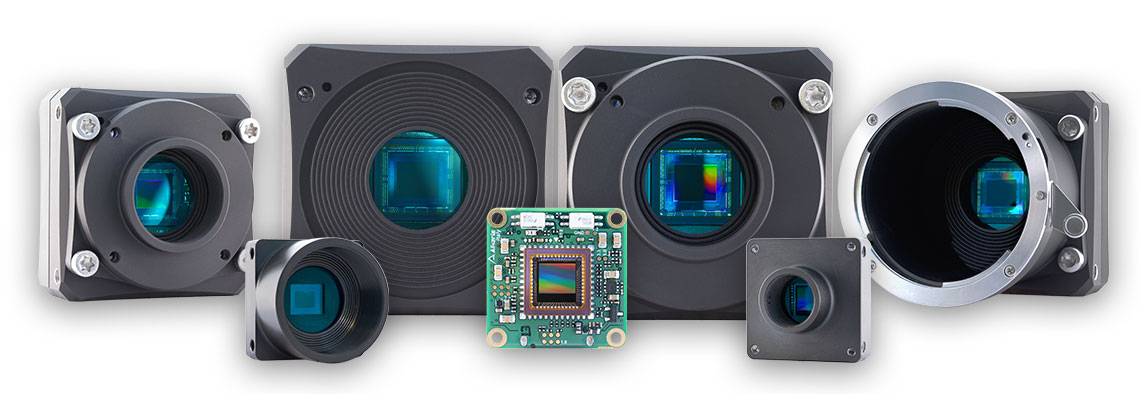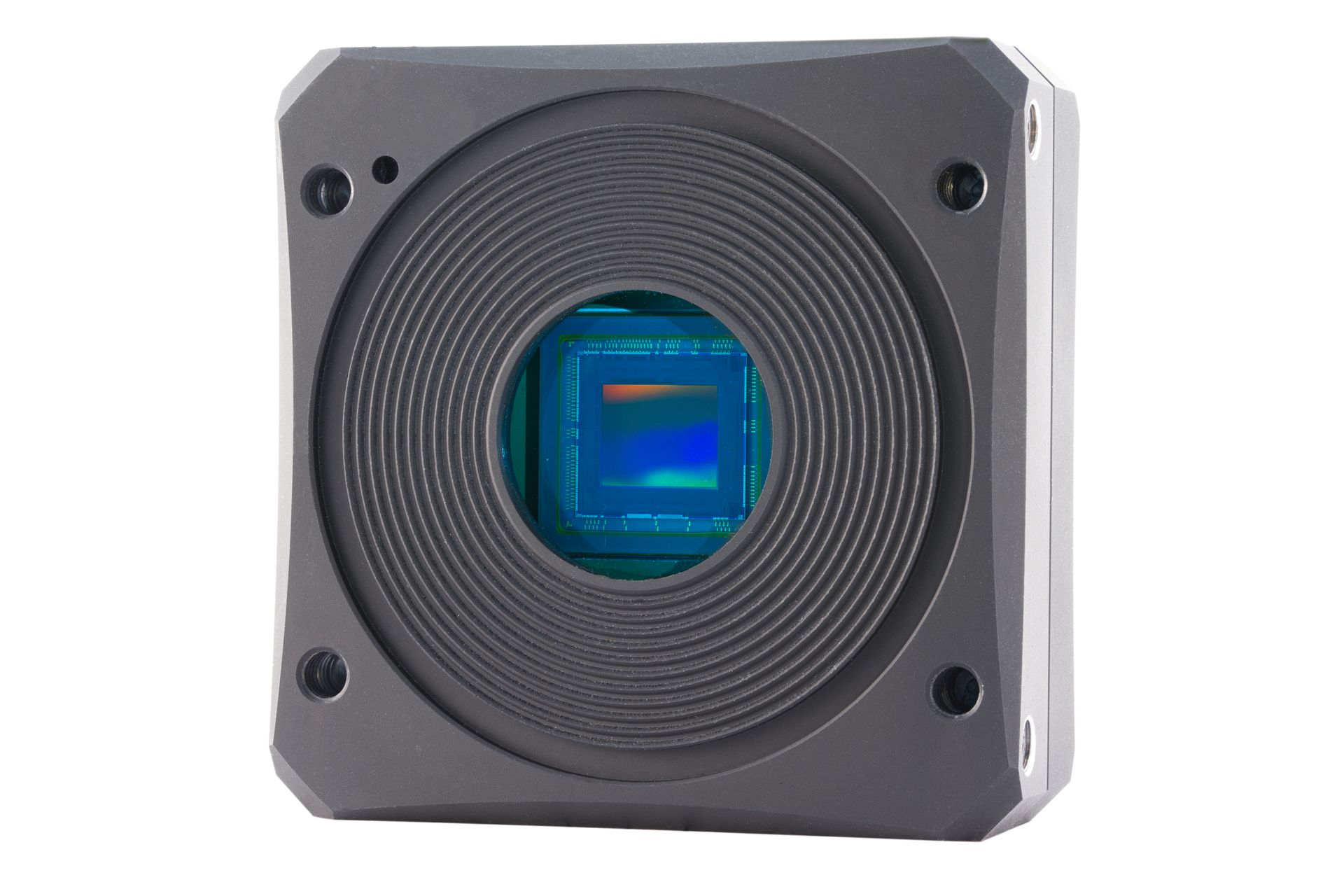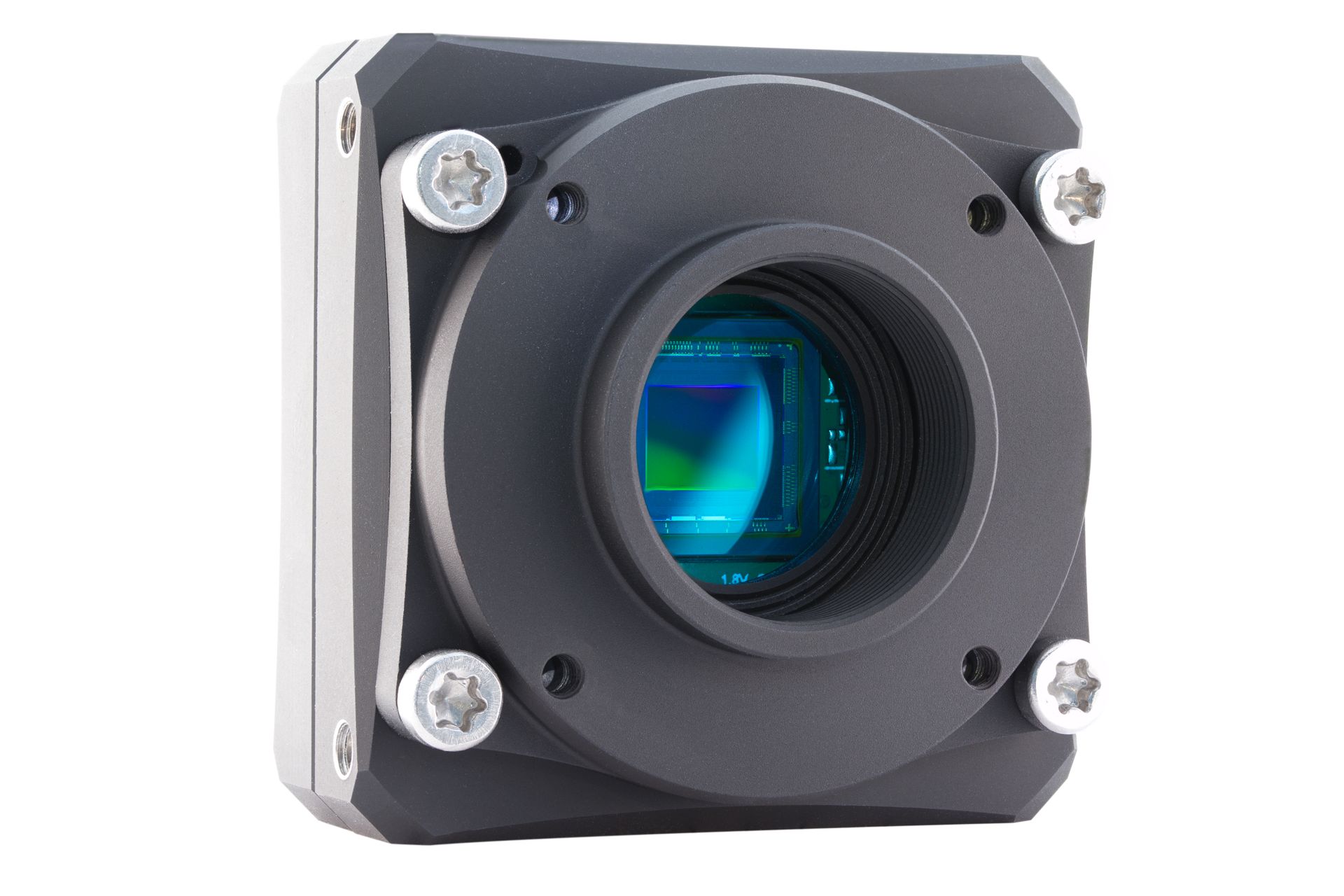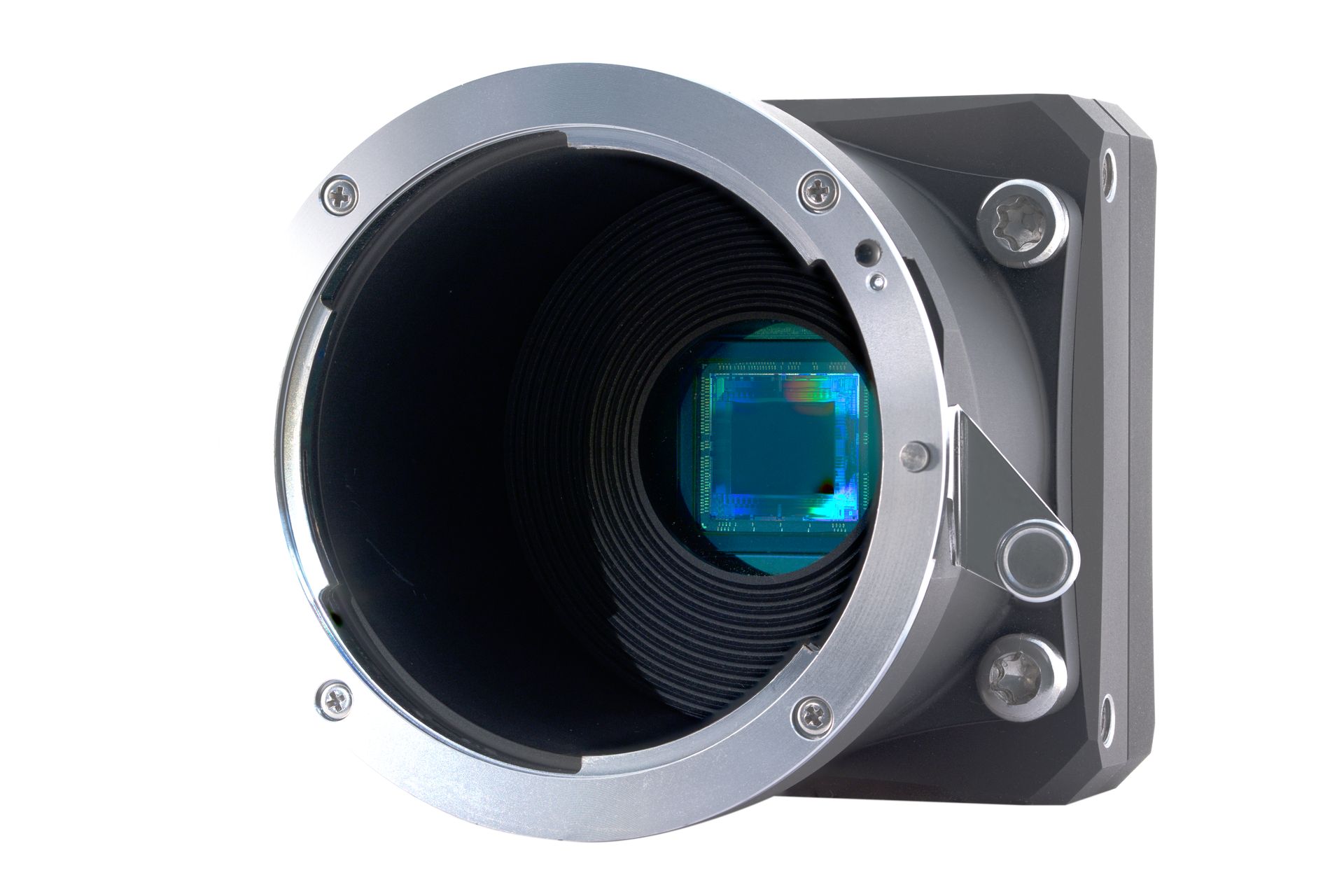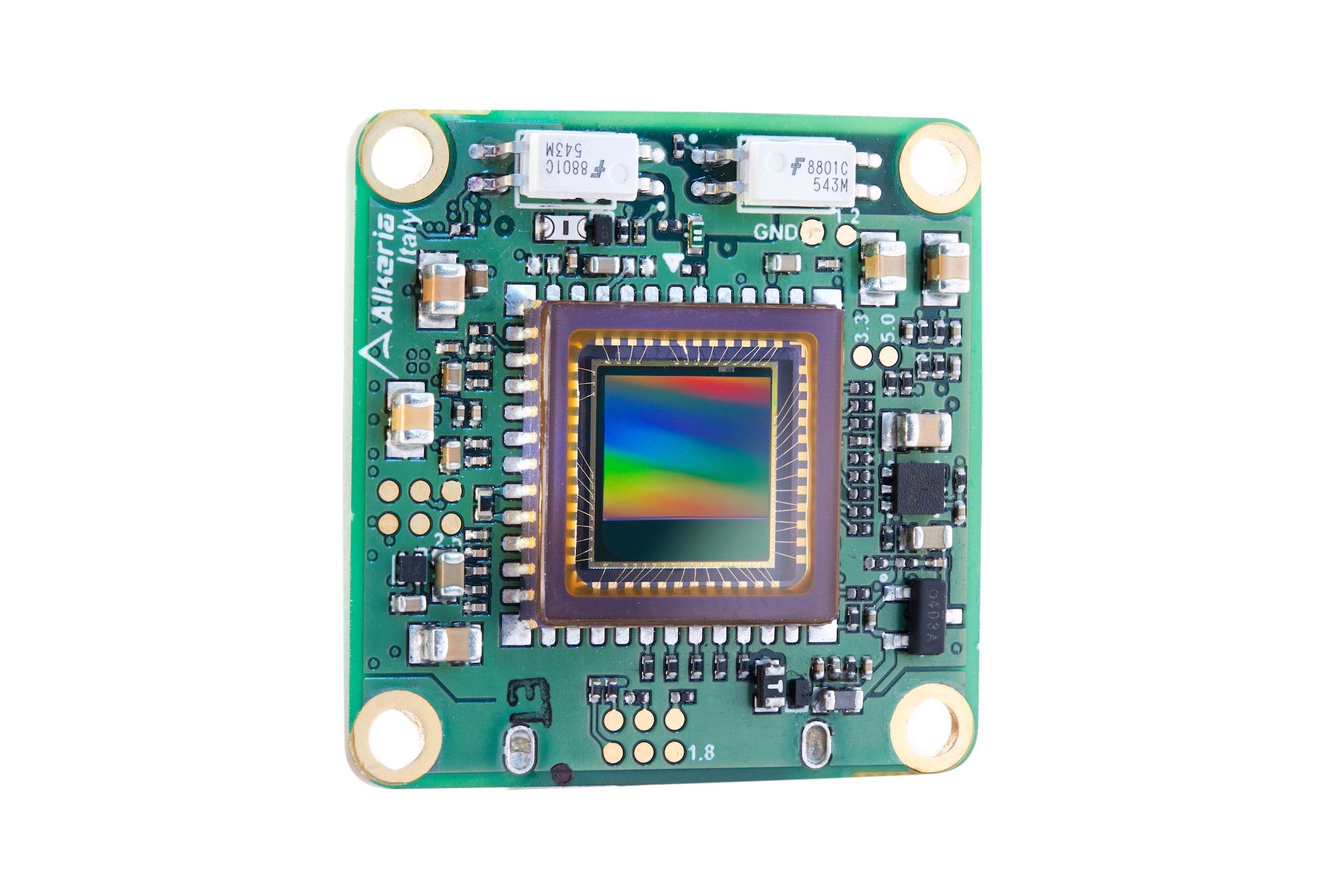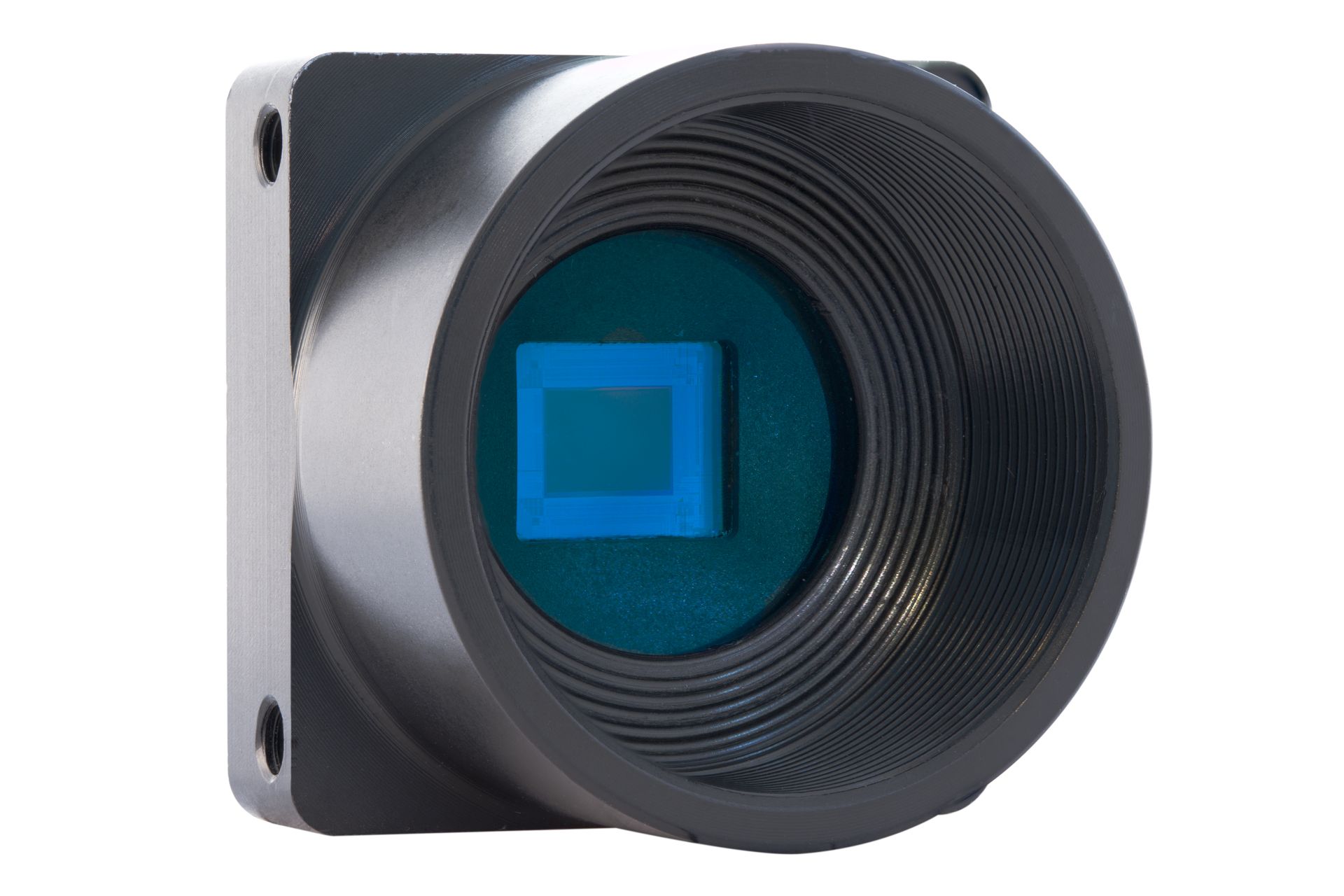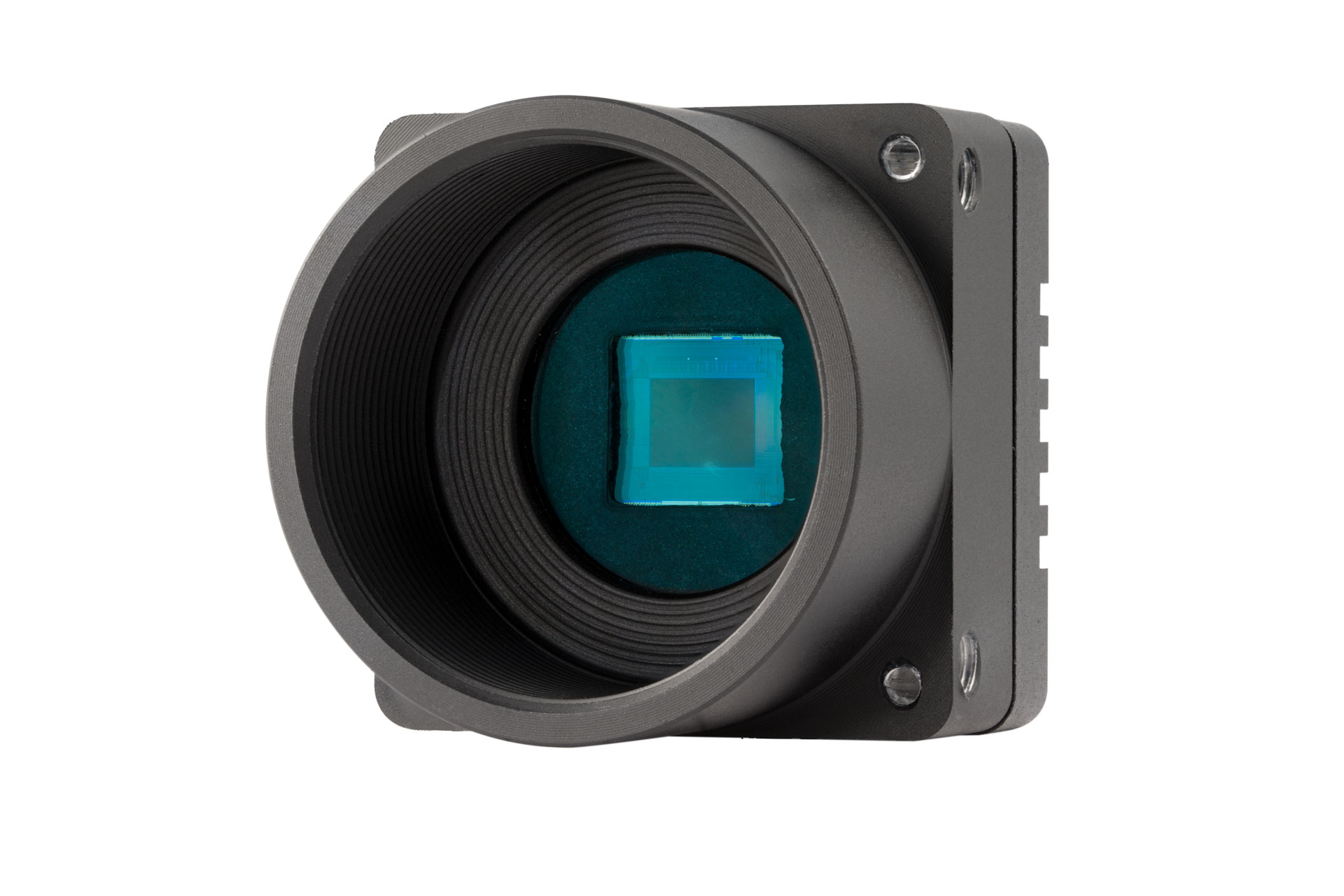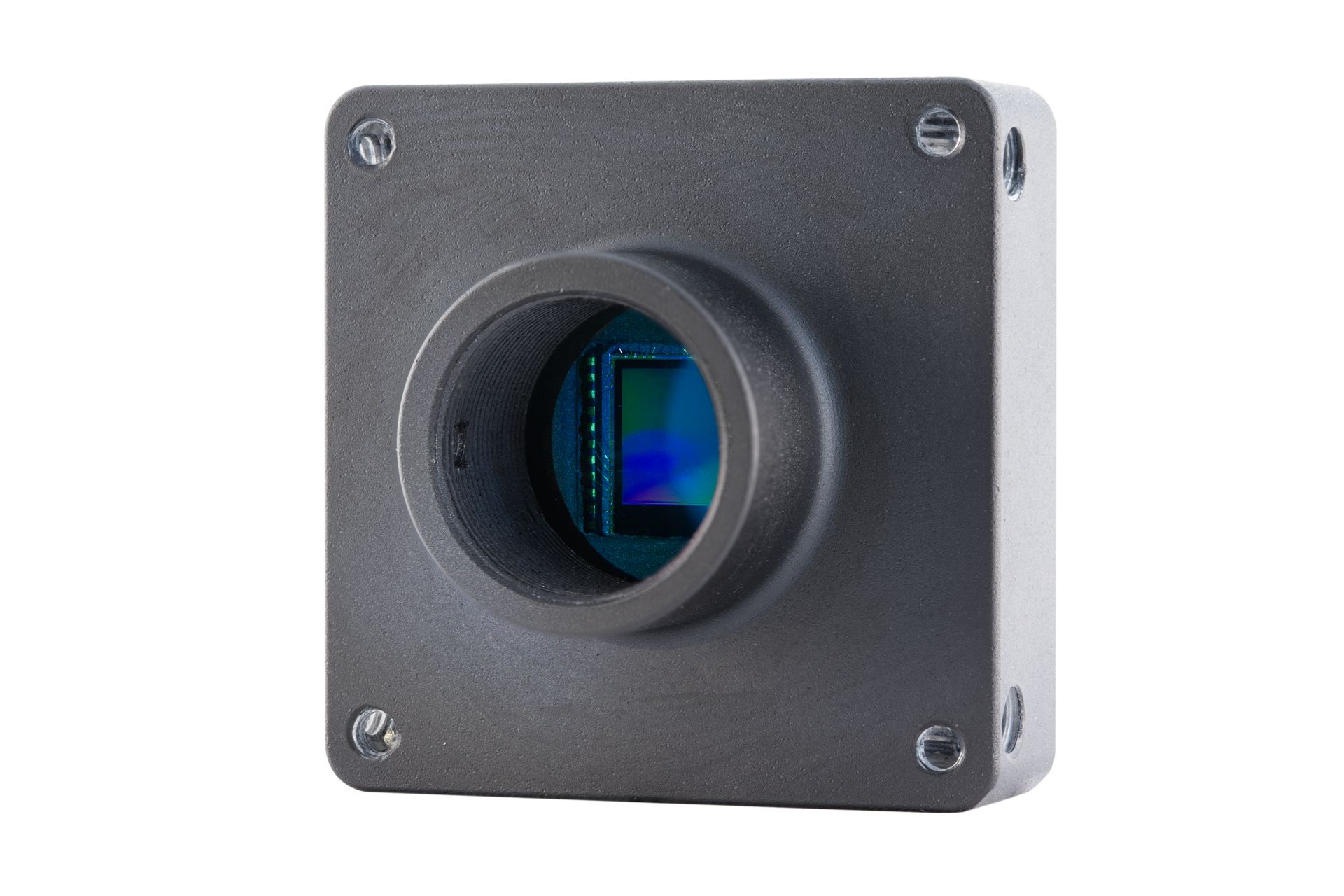Optical Profilometers






Camera models with profilometer extension
Laser triangulation is a non-contact distance measurement technique widely employed for surface inspection applications.
We've been working to develop a laser triangulation extension to provide our customers with a fast and reliable solution for their measurement and quality inspection issues. Our Optical Profilometer extension enhances the lasting and flexible platform of our standard cameras: you can get all the quality of Alkeria cameras, along with all brand-new functionalities!
Discover our new CELERA, CELERA One, and ARIA models featuring our new Profilometer extension.
How it works
In a laser triangulation measurement setup, a laser line is projected onto the entire surface of an object passing through the inspection area. Then, a CMOS camera placed at a predetermined angle acquires the shape of the laser line reflected from the object. From this shape, it is possible to measure the target profile.
Thanks to a dedicated algorithm and our state-of-the-art FPGA technology, Alkeria cameras can define and extract the line position in every column of the acquired frame with sub-pixel precision.
In particular, the Profilometer extension enables on-camera acceleration of the line position detection algorithm. Our cameras can extract and calculate profile coordinates by themselves, greatly reducing the amount of data sent through the USB3 interface.
In this way, users can easily reach the maximum sensor frame rate and collect only the data useful for the measurement.
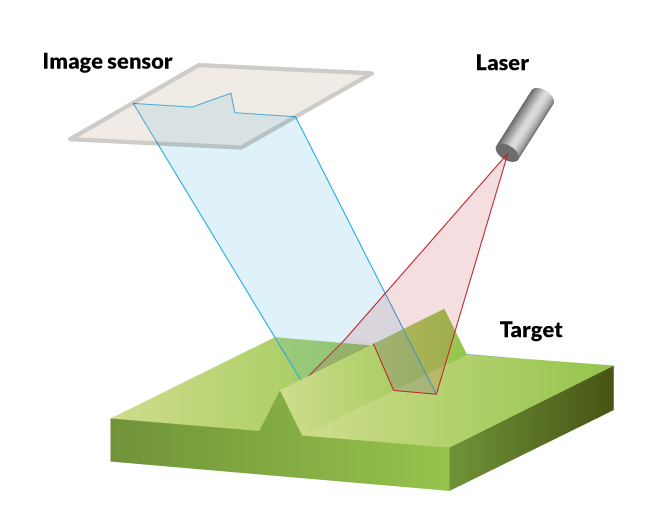
Powerful platform
We decided to extend our standard area-scan cameras lineup by adding new models equipped with an optical profilometer feature: in this way, our users can take advantage of a reliable and proven system with the features and specifications of Alkeria standard cameras.
Our system relies on the well-known CELERA, CELERA One, and ARIA camera series. With up to 4112 pixels per profile resolution and an acquisition speed of up to 2.62 kHz (on 128 rows), you can easily find the perfect fit for every measurement application.
Check the Technical Specifications tab below to discover all our cameras' specifications.
Advanced interface
All of our cameras feature a USB3 interface. USB3 provides the most convenient and widespread interface, pushing speed performances to the top while powering directly the camera, thus eliminating the need for an external power supply.
Through a versatile I/O interface, it's possible to control external devices such as strobe lights, encoders, etc. Depending on the camera model, users can rely on 2 input lines with a direct encoder interface, 2 output lines, and 1 input/output (RS422, RS644 LVDS, LVTTL)*. Their multipurpose I/O connector provides user I/O, frame triggering, and a direct encoder interface.
*on CELERA and CELERA One models
Drivers and software
An easy-to-use set of software API is available, which allows developers to quickly produce fast and clean code both on Windows and Linux, supporting all major programming languages such as Python, C#, VB, and C++ in the Visual Studio or QT environments.
Our Software Development Kit, provided together with the cameras, is fully compatible with Cognex VisionPro, MVTech Halcon, NI LabView, and other major machine vision software for industrial applications.
Accessories
Camera accessories available upon request are:
Features
- Dedicated onboard processing
- Powerful platform
- Frame combiner feature
- USB3 interface
- Tiny rugged design
- Dedicated lens adapters
 Dedicated onboard processing
Dedicated onboard processing
Thanks to a specific algorithm and our state-of-the-art FPGA technology, our cameras can define and extract the line position at a very high speed, reducing PC workload.
 Powerful platform
Powerful platform
Based on the lasting and flexible platform of our standard cameras, you can get all the quality of Alkeria cameras, along with all the brand-new profilometer functionalities.
 Frame combiner feature
Frame combiner feature
Thanks to the Frame Combine feature, it is possible to stack multiple profiles into one single frame. This way, data transfer is optimized in order to preserve processing power for the user’s application.
 USB3 interface
USB3 interface
Up to 5 Gbps USB3 interface allows easy interface to your PC, eliminating expensive frame grabbers and bulky cables while maintaining the highest performance.
 Tiny rugged design
Tiny rugged design
Small, ultra-lightweight, rugged aluminum machined high precision case allows maximum installation flexibility even in space-constrained environments.
 Dedicated lens adapter
Dedicated lens adapter
Our F-mount, C-mount, and S-mount lens adapters are specifically built to fit our cameras; they give our customers the perfect flexibility in choosing the best optics for their applications.
Download
![]()
Documents
![]()
Technical specifications
| Model | A15S-PRF | CO2K-PRF | C5S-PRF | C12SX-PRF |
|---|---|---|---|---|
| Resolution | 1456 x 1088 | 2048 x 1088 | 2464 x 2056 | 4112 x 3004 |
| Sensor | SONY Pregius™ IMX273 (*) | AMS CMV2000 | SONY Pregius™ IMX250 (*) | SONY Pregius™ IMX253 (*) |
| Format | 1 / 2.9 " | 2 / 3 " | 2/3 " | 1,1" |
| Pixel size | 3.45 µm x 3.45 µm | 5.5 µm x 5.5 µm | 3.45 µm x 3.45 µm | |
| Color / Mono | Mono | |||
| Profile speed (128 rows) | 1.57 kHz | 2.62 kHz | 1.89 kHz | 1.04 kHz |
| Pixel Format | MONO8, MONO16, RAW8, RAW16 | |||
| A/D Conversion | 8, 10, 12 bits | 10, 12 bits | 8, 10, 12 bits | |
| Synchronization | External trigger, software trigger | |||
| Shutter Control | 18 µs ÷ 5 s (global shutter) | 15 μs ÷ 5 s (global shutter) | 17 µs ÷ 5 s (global shutter) | 25 µs ÷ 5 s (global shutter) |
| Power Supply | < 2 W, powered by USB3 interface | < 3 W, powered by USB3 interface | ||
| Inputs / Outputs | 2 I/O, LVTTL levels (configurable GPIO or RS232 or direct encoder interface), 1 in (isolated), 1 out (isolated) | 2 in (direct encoder interface), 2 out, 1 I/O (RS422, RS644 LVDS, LVTTL) | ||
| Lens Adapter | Board level | C-mount only | S-mount only | Cased with C-mount | Cased with S-mount | C-mount, F-mount (optional) | ||
| Interface | USB3.2 Gen1x1 | 2 x USB3.2 Gen1x1 | ||
| Weight | < 5 g (board level) | 126 g (with C-mount adapter) | 150 g (with C-mount adapter) | |
| Size | 26,4 mm x 26,4 mm x 7,8 mm (board level) | 56 mm x 56 mm x 38.3 mm (with C-mount adapter) | 56 mm × 56 mm × 26.7 mm (without lens adapter) | |
| Conformity | CE, RoHS, FCC, IC | |||
| Controls | Shutter, gain, brightness, contrast, LUT and gamma correction | |||
| Operative Temp | 0 ÷ 50 °C | |||
SONY IMX 250/252/264 - Mono
CMV 2000/4000 - Mono
IMX 273 - mono
Sensor specifications (b/w and color) are extracted from the data sheet of the manufacturer excluding lens and filter.
CELERA
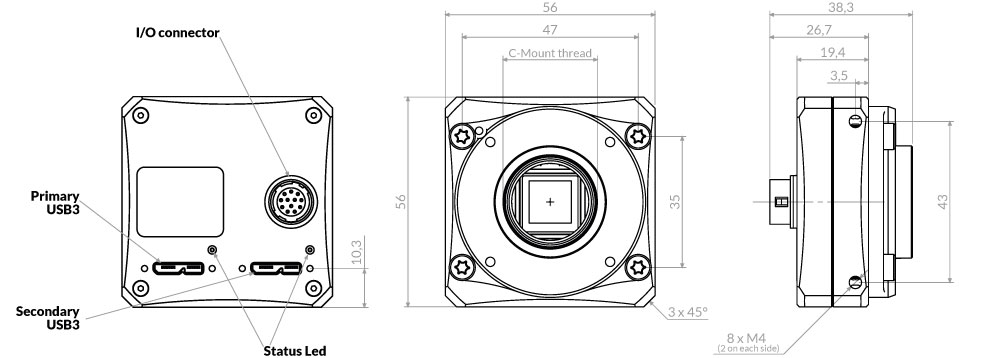
CELERA One
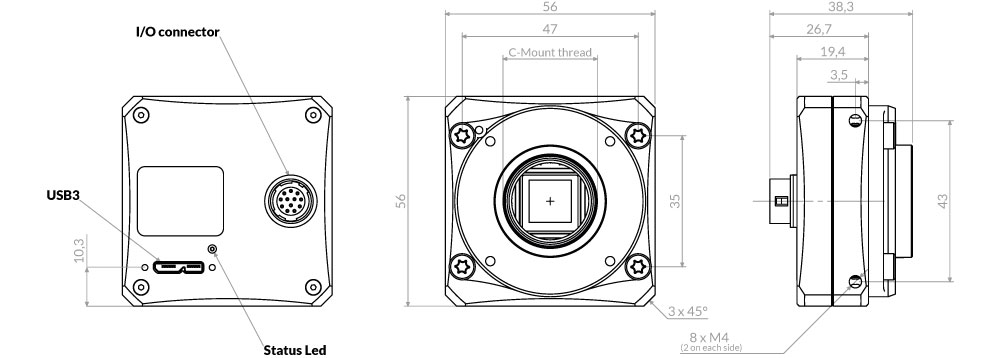
ARIA - board level
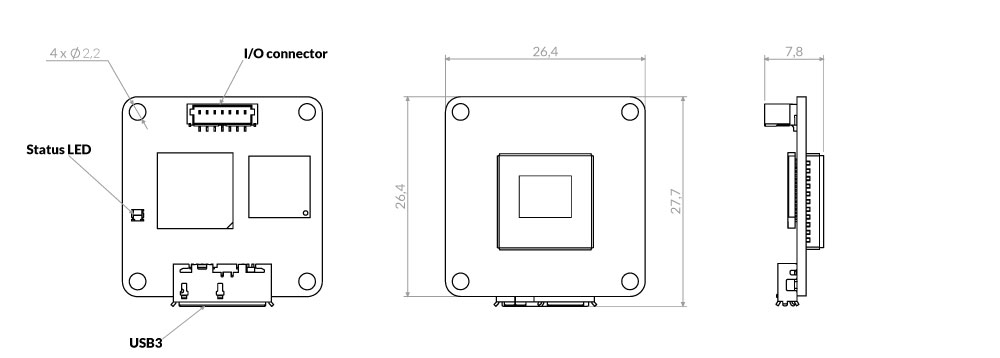
All dimensions are expressed in millimeters.
Camera specifications are subject to change without notice.
